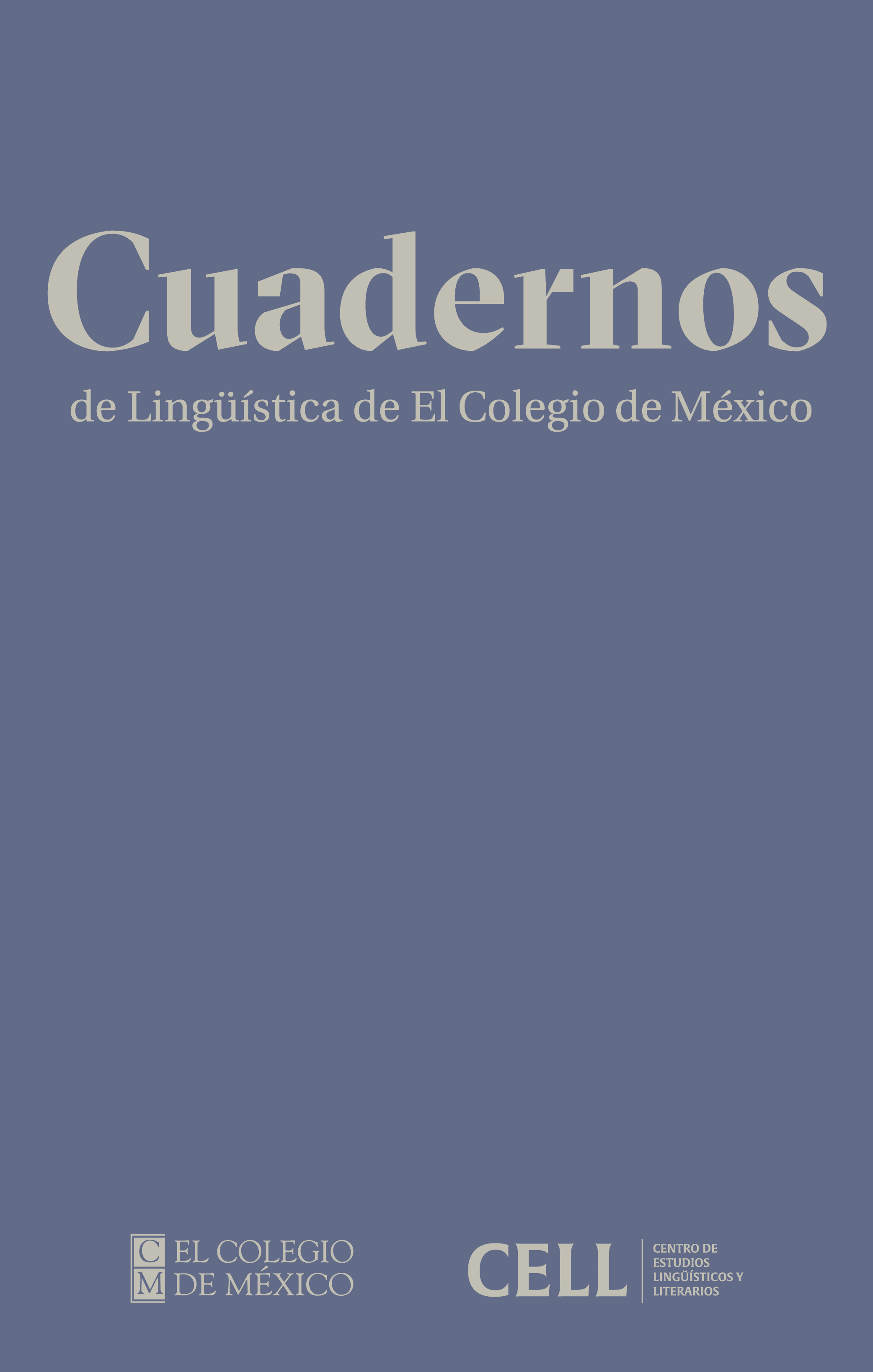Postpositions in Cabecar
DOI:
https://doi.org/10.24201/clecm.v10i00.268Keywords:
event-oriented postpositions, participant-orinted postpositions, degrees of grammaticalization, enclitic, suffix, primitive postpositions, complex postpositions, relational nounsAbstract
Cabecar (Chibchan, Costa Rica) is rigidly left-branching at lower syntactic levels, including postpositions instead of prepositions. All functions of an NP except the absolutive are marked by a postposition. While the grammatical postpositions are unanalyzable, the more concrete ones, which adjoin peripheral participants, local, temporal and manner adverbials, may be primitive or complex. Almost all of the latter are based on relational nouns. Concrete postpositions may profitably be divided into event-oriented and participant-oriented ones; the latter mark their complement as a secondary predicate on an actant of the verb. The primitive postpositions are assessed as to their degree of grammaticalization according to a set of criteria. As a result, they are close to case suffixes, yet fall short of this target.
Downloads
References
Bisang, Walter; Malchukov, Andrej; Rieder, Iris & Sun, Linlin. 2020. Measuring Grammaticalization: A questionnaire. In Bisang, Walter DOI: https://doi.org/10.1515/9783110712735-203
& Malchukov, Andrej (eds.), Grammaticalization scenarios. Cross-linguistic variation and universal tendencies (Comparative Handbooks
of Linguistics, 4), vol. 2, ix - xxiii. Berlín: Mouton de Gruyter. https://doi.org/10.1515/9783110712735-203 DOI: https://doi.org/10.1515/9783110712735-203
Givón, Talmy. 2021. The life cycle of adpositions. Amsterdam: John Benjamins. https://doi.org/10.1075/z.236 DOI: https://doi.org/10.1075/z.236
González Campos, Guillermo & Lehmann, Christian. 2023. The Cabecar language. Unpublished ms.
Himmelmann, Nikolaus P. & Schultze-Berndt, Eva. 2005. Issues in the syntax and semantics of participant-oriented adjuncts: an introduction. In Himmelmann, Nikolaus P. & Schultze-Berndt, Eva (eds.), Secondary predication and adverbial modification. The typology of depictives, 3-67. Oxford: Oxford University Press. https://doi.org/10.1093/acprof:oso/9780199272266.003.0001 DOI: https://doi.org/10.1093/acprof:oso/9780199272266.001.0001
Lehmann, Christian. 2015. Thoughts on grammaticalization (Classics in Linguistics, 1). 3rd edition. Berlin: Language Science Press. https://doi.org/10.17169/langsci.b88.99
Lehmann, Christian. 2019. Complex spatial prepositions from Latin to Castilian. In Fagard, Benjamin; Pinto de Lima, José & Stosic, Dejan (eds.), Les prépositions complexes dans les langues romanes. Revue Romane 54(1). 93-125. https://doi.org/10.1075/rro.00017.leh DOI: https://doi.org/10.1075/rro.00017.leh
Lehmann, Christian. 2020. Univerbation. Folia Linguistica Historica 41. 205-252. https://doi.org/10.1515/flih-2020-0007 DOI: https://doi.org/10.1515/flih-2020-0007
Margery Peña, Enrique. 1989. Diccionario cabécar-español, español-cabécar. San José, C.R.: Universidad de Costa Rica.
Pacchiarotti, Sara. 2020. On the origins of the ergative marker wã in the Viceitic languages of the Chibchan family. In Barðdal, Jóhanna; Gildea, Spike & Lujan, Eugenio R. (eds.), Reconstructing syntax (Brill’s Studies in Historical Linguistics, 11), 241-288. Leiden/Boston: E.J. Brill. https://doi.org/10.1163/9789004392007_007 DOI: https://doi.org/10.1163/9789004392007_007
Published
How to Cite
-
Abstract248
-
PDF168
-
XML9
-
EPUB23
-
Kindle55
-
MP32
Issue
Section
License
Copyright (c) 2023 Christian Lehmann

This work is licensed under a Creative Commons Attribution-NonCommercial-NoDerivatives 4.0 International License.
Authors retain copyright of their work and are free to disseminate it, make copies for any use, and/or deposit in any repository or archive of their choice, but they grant Cuadernos de Lingüística de El Colegio de México the right to publish the work for the first time. Authors agree to acknowledge Cuadernos de Lingüística de El Colegio de México as the site of original publication of their article / note / review through proper citation.
Articles appearing in Cuadernos de Lingüística de El Colegio de México are made available to readers under a Attribution-NonCommercial-NoDerivatives 4.0 International.









